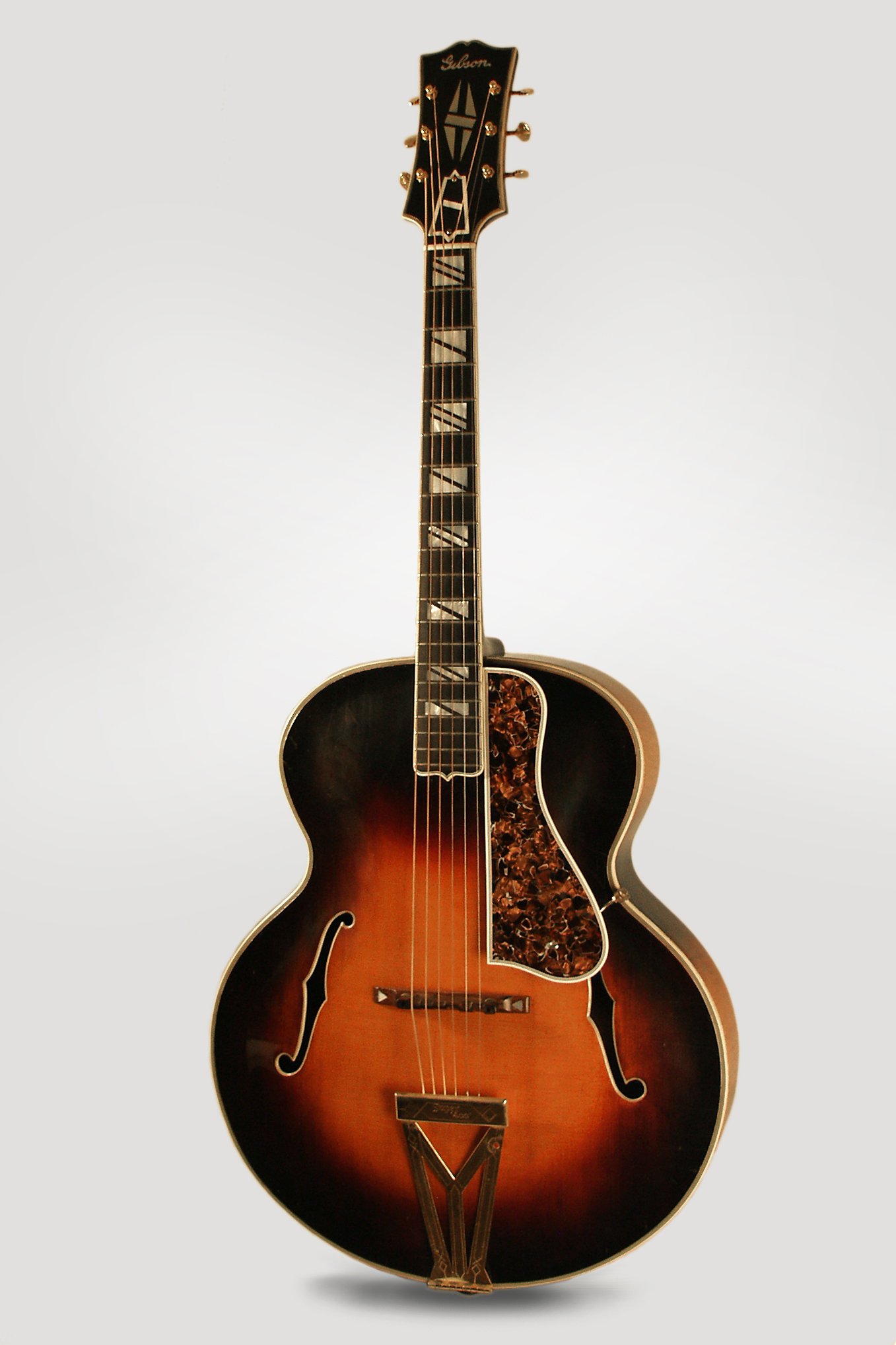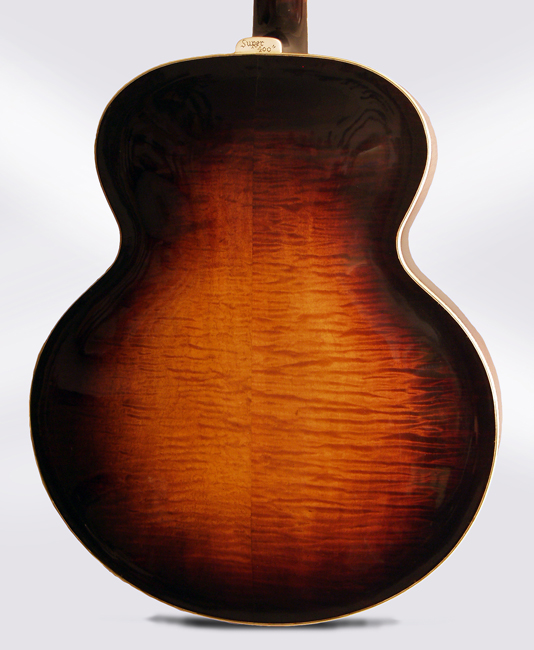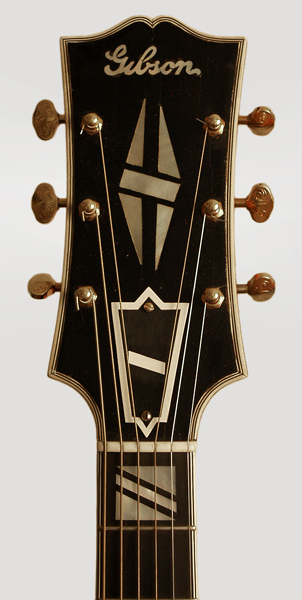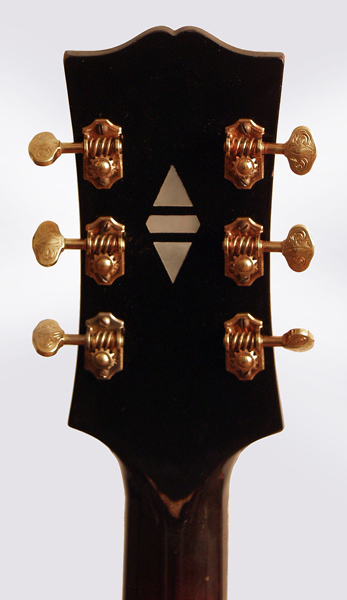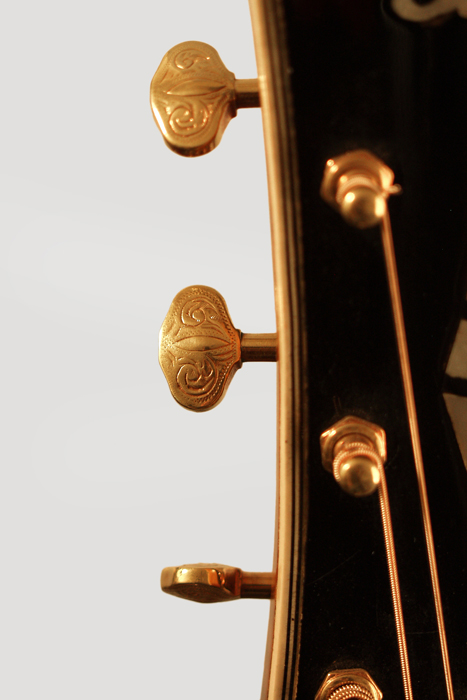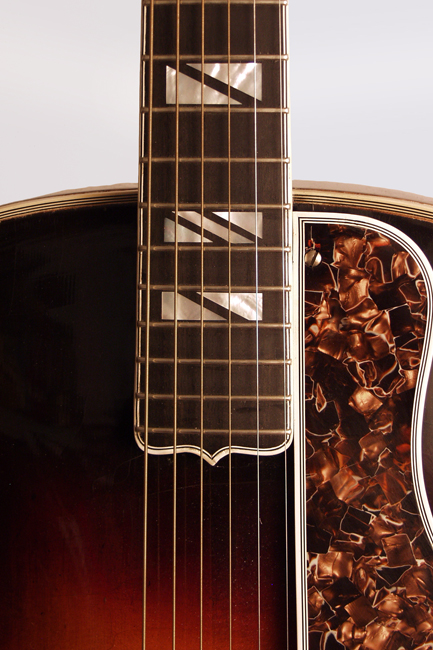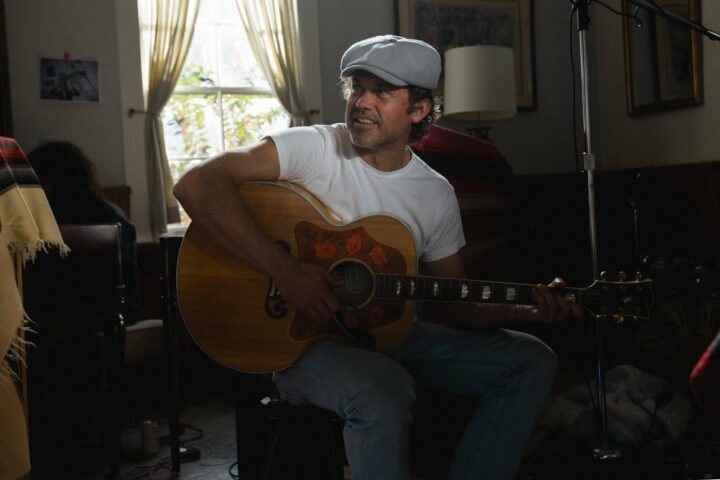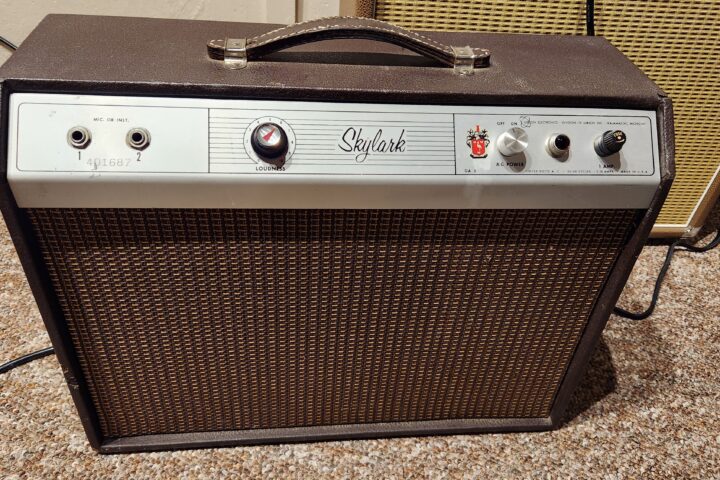1935 Gibson Super 400
Gibson introduced the L-5 in late 1922 but it took a few years for guitarists to accept the radical new design. But thanks to its remarkable volume and clear projection, by 1930 the L-5 had essentially replaced the banjo as the rhythm instrument of choice for dance bands. For a little less than a decade Gibson had the archtop guitar market to themselves but in the early 1930s other builders began to offer their own competing models. Two of the most important were John D’Angelico and Epiphone, both of whom were based in New York. Being an individual luthier, D’Angelico didn’t offer much competition but Epiphone, under the direction of Epaminindas “Epi” Stathopoulo, was a different story.
Epi Stathopoulo was an ambitious man who had inherited a company that that was formed by his grandfather in Sparta, Greece in 1873. The Stathopoulo family moved to America in 1903 where they continued to make mandolins and violins. In the early 1920s they started making banjos and guitars. In 1931 Epiphone introduced the De Luxe, their first carved top, f-hole guitar. At 16 3/8″ across the lower bout, it was a hair wider than the L-5’s 16″ measurement. In 1935 Gibson responded by offering the 17″ Advanced L-5 in 1935, and Epiphone countered with the 17 3/8″ Super De Luxe. Gibson must have known Epiphone was going to make a slightly larger De Luxe because in 1935 they introduced the Super 400, which at 18″ inches across the lower bout was the largest production guitar at the time. Of course Epiphone responded with an even larger guitar, the 18 1/2-inch The Emperor, but Gibson decided to leave well enough alone.
Which is just as well, because the Super 400 is a huge guitar. Today’s Catch dates to 1935, the first year of issue, and it looks to be a fine example in excellent condition. For an extra added, dose of coolness, this guitar used to belong to Ry Cooder (who happens to be The Fretboard Journal #32’s cover story. For the first couple of years of its existence, the Super 400 had a shorter, 24 3/4-inch scale length and an upper bout that measured 12 1/2-inches. Not many people know this, but the original Super 400’s body shape was based on an obscure model Gibson from around 1906 called the 0 Artist, that they only made for a year or two. The early Super 400s have a surprisingly sweet, mellow tone. Along with the shorter scale, they have an X-braced top, a combination that seems to enhance the bass and mid-range.
To my ear, these are the best sounding Super 400s but players in the 1930s didn’t want sweet and mellow, they wanted lots of projection and volume. In 1937 Gibson lengthened the scale to 25 1/5 and enlarged the upper bout to 13 5/8-inches, which did increase the volume somewhat. In 1939 they switched out the X-bracing for two parallel tone bars, which helped with the projection. This later version of the Super 400 is a very loud, powerful sounding guitar but I think it lacks the subtlety of the early version. If you’d like to add this guitar to your collection, just call the good people at Retrofret, fork over $15,500 and they will be happy to fulfill your Super 400 cravings.
Click here for the original listing.
